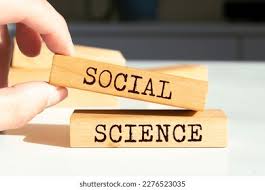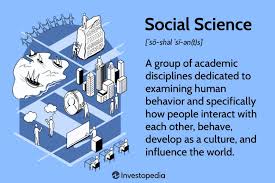English (G2 )
Résumé de section
-
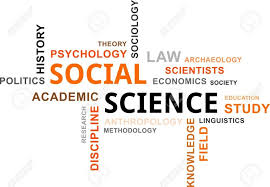
THIS COURSE IS DIRECTED TO STUDENTS OF FIRST YEAR SOCIAL SCIENCES IN ORDER TO LEARN ABOUT THE DEFINITION OF SOCIAL SCIENCE AND THE MOST THEORIES AND THE MAJOR PIONEERS
AND TO FOCUS ON THE BASIC CONCEPTS OF SOCIAL SCIENCE
-
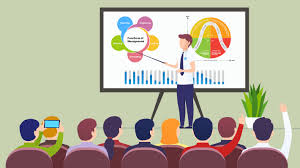
Social studies teaches students how to be thoughtful, active citizens in a democratic society. Students develop an understanding of current issues and events, and develop the context through which to analyze these issues and events and consider alternative perspectives and solutions.
Goals of Social Studies. To help students develop Social Understanding and Civic Efficacy. To Aquiry Knowledge from the social sciences, history, and humanities. To develop Skills to think and to process information. To develop appropriate democratice Values and Beliefs
Social science entails the study of human behavior and society at a variety of levels. Popular social science majors include psychology, political science, and economics. A social science degree can lead to many types of jobs in business, science, and law.
-
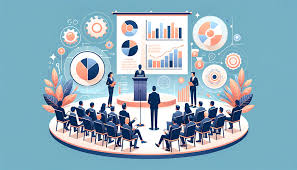
Social science is a broad category of academic disciplines involving the study of human society and social relationships. These topics include cultural anthropology, economics, political science, sociology, criminology, social psychology, comparative law, and comparative religion.
Social Science is the study of social systems, institutions, and cultures. This degree will equip you to understand and analyse the social dynamics of the world around you, and develop practical solutions to create positive change.
US A GOAL AND PREVIOUS ACHIVEMENT
A core goal of this sort of study is to better understand how we make improvements to our societies and communities as well as the role of the individual. Social Science courses tend to take elements of lots of different subjects and provide an interdisciplinary approach to learning.TEACHING OBJECTIVES1- To read and understand a text in order to summarize it2- to develop the learner 's listening skills3- oral summarization -
INTRODUCTION
3- THE COMMUNICATION PROCESS
4- EFFECTIVE COMMUNICATION
5-OBSTACLES TO COMMUNICATION
6-CULTURE
7-CULTURAL DIVERSITY
8-INFORMATION AND COMMUNICATION TECHNOLOGY
9-TELECOMMUNICATION
10-PSYCHOLOGICAL LEXICON
13-FROM SOCIAL PHENOMENON TO SOCIAL PROBLEM
15-SOCIAL PROBLEMS IN ALGERIA

-
What are five concepts of sociology?
Sociological concepts include a wide range of themes and topics. However, five important examples of sociological concepts can be outlined as society, (social) structure, (individual) agency, (social) stratification, and culture.
What does "concept" mean in sociology?
In sociology, the term concept refers to an abstract idea corresponding to themes and realities in society. For example, the concept of social class is an abstract idea, but it refers to the material differences between the socioeconomic power and resources of different groups in society.
What are the main sociological concepts?
There are multiple sociological concepts that are essential for this discipline. The main sociological concepts include structure, agency, stratification, society, class, culture, gender, and religion. Each sociological theory is centered around several key concepts, such as the Marxist theory and the concepts of class, capitalism, and labor.
-
What is communication? Communication is the sending and receiving of information and can be one-on-one or between groups of people, and can be face-to-face or through communication devices. Communication requires a sender, the person who initiates communication, to transfer their thoughts or encode a message.
Communication is the active process of exchanging information and ideas. Communication involves both understanding and expression.
The four types of communication are verbal, non-verbal, visual and written communication. No matter how we communicate, start by thinking about what the reader/listener should think, feel and do once they've heard or read our message.
-
What is the communication process?
The communication process refers to a series of actions or steps taken in order to successfully communicate. It involves several components such as the sender of the communication, the actual message being sent, the encoding of the message, the receiver and the decoding of the message. There are also various channels of communication to consider within the communication process. This refers to the way a message is sent. This can be through various mediums such as voice, audio, video, writing email, fax or body language. The overall goal of the communication process is to present an individual or party with information and have them understand it. The sender must choose the most appropriate medium in order for the communication process to have worked successfully.Related: 4 Types of Communication (With Examples)
Parts of the communication process
The communication process has several components that enable the transmission of a message. Here are the various parts:
- Sender: This is the person that is delivering a message to a recipient.
- Message: This refers to the information that the sender is relaying to the receiver.
- Channel of communication: This is the transmission or method of delivering the message.
- Decoding: This is the interpretation of the message. Decoding is performed by the receiver.
- Receiver: The receiver is the person who is getting or receiving the message.
- Feedback: In some instances, the receiver might have feedback or a response for the sender. This starts an interaction.
Related: The Components of Effective Workplace Communication
-
Effective communication is the process of exchanging ideas, thoughts, opinions, knowledge, and data so that the message is received and understood with clarity and purpose. When we communicate effectively, both the sender and receiver feel satisfied.
Communication occurs in both verbal and non-verbal forms, such as written, visual, and listening. It can occur in person, on the internet (on forums, social media, and websites), over the phone (through apps, calls, and video), or by mail.
While the effectiveness of communication can be difficult to measure, its impact is hard to deny. According to one study, surveyed companies in the United States and United Kingdom with at least 100,000 employees lost $62.4 million per year on average due to poor communication. On the flip side, companies led by effective communicators had nearly 50 percent higher total returns to shareholders over companies with less effective communicators at the helm [1].
The 5 Cs of communication
For communication to be effective, it must be:
-
Clear
-
Correct
-
Complete
-
Concise
-
Compassionate
-
-
Barriers to Effective Communication
Communication is defined as the process by which information is exchanged between individuals through a system of signs, symbols. The concept of communication involves a sender, a message and a recipient.
The sender sends the message and the recipient is the receiver of the message. The process of communication is never smooth as it is affected by the barriers of communication.
Barriers to effective communication can result in confusion which can lead to incorrect information being conveyed or miscommunication which can lead to loss of business.
Following are some of the barriers to effective communication:
1. Semantic barriers
2. Psychological barriers
3. Organisational barriers
4. Cultural barriers
5. Physical barriers
6. Physiological barriers
Let us study in detail about the various types of barriers to effective communication.
Semantic barriers: Semantic barriers are also known as language barriers. These barriers are caused due to improper communication between the sender and the receiver. The following instances of semantic barriers can be witnessed in communication.
Poor quality of message: Message when communicated should be precise and easy to understand, that makes it easy for the receiver to grasp the information conveyed.
Sometimes, due to the lack of clarity or complexity of the way of providing information from the sender, there can be a case of semantic barriers.
For e.g. A manager is conversing in English to a group of workers who understand and speak Bengali. It will create confusion among workers as they will not be able to understand what is being conveyed by the manager.
Technical language: Language barriers also arise when the sender of the message is speaking in technical terms while the receiver is unaware of the terms. It creates confusion and misunderstanding between the sender and receiver by acting as a barrier to effective communication.
Psychological Barriers: Psychological barriers play an important role in interpersonal communication as the state of the mind of the sender or the receiver can make it difficult to understand the information that is conveyed, which often leads to misunderstanding.
Here are some instances where psychological barriers to communication can be seen.
1. Premature evaluation of information by the receiver even before it is transmitted can lead to barriers in communication, as it will create premature conclusion to the message, which withholds the original message.
2. Inadequate attention from the receiver’s end at the time of communication can lead to barriers of communication as the information conveyed by the sender is not properly received by the receiver.
3. When information is passed within multiple sources, the final information is distorted as the receivers of the message are not able to retain everything that was conveyed. This can cause communication barriers.
Organisational barriers: Organisational barriers are those barriers that are caused due to the structure, rules and regulations present in the organisation. The various types of barriers that can be encountered due to superior subordinate relationships where the free flow of communication is not possible.
Sometimes the complexity of organisational structure and multiple managers make it difficult to convey information properly, and the information gets distorted leading to miscommunication.
Cultural barriers: Cultural barriers are those that arise due to lack of similarities among the different cultures across the world. A term that can be harmless in one culture can be regarded as a slang in another culture. Moreover, various beliefs can differ from one culture to another.
Physical barriers: Physical barriers to communication are those that arise due to certain factors like faulty equipment, noise, closed doors and cabins that cause the information sent from sender to receiver to become distorted, which results in improper communication.
Physiological barriers: Physiological barriers arise when a sender or the receiver of the communication is not in a position to express or receive the message with clarity due to some physiological issues like dyslexia, or nerve disorders that interfere with speech or hearing.
-
Culture can be defined as all the ways of life including arts, beliefs and institutions of a population that are passed down from generation to generation. Culture has been called "the way of life for an entire society." As such, it includes codes of manners, dress, language, religion, rituals, art.
Culture is the holistic combination of learned and shared beliefs, values, and practices that create cohesion in a group and is the core concept within which anthropologists work. It is dynamic, evolving based on the needs of the people within it and as one culture comes into contact with another.
-
Cultural diversity is the quality of diverse or different cultures, as opposed to monoculture. It has a variety of meanings in different contexts, sometimes applying to cultural products like art works in museums or entertainment available online, and sometimes applying to the variety of human cultures or traditions in a specific region, or in the world as a whole. It can also refer to the inclusion of different cultural perspectives in an organization or society.
-
Information and Communication Technologies (ICTs) is a broader term for Information Technology (IT), which refers to all communication technologies, including the internet, wireless networks, cell phones, computers, software, middleware, video-conferencing, social networking, and other media applications and services ...etc
Information and communications technology (ICT) is an extensional term for information technology (IT) that stresses the role of unified communications and the integration of telecommunications (telephone lines and wireless signals) and computers, as well as necessary enterprise software, middleware, storage and ...etc
Information and communication technologies (ICT) is defined as a diverse set of technological tools and resources used to transmit, store, create, share or exchange information.
-
Telecommunications, also known as telecom, is the exchange of information over large distances. It's a broad term that includes various sectors, but all include a transmitter and a receiver. The medium of signal transference can be via various means—fiber, electromagnetic fields, light, cable, etc.
This is a broad term that includes a wide range of information-transmitting technologies and communications infrastructures. Examples include wired phones, cellphones, microwave communications, fiber optics, satellites, radio and television broadcasting, the internet and telegraphs.
-
Social phenomena or social phenomenon (singular) are any behaviours, actions, or events that takes place because of social influence, including from contemporary as well as historical societal influences.
There are three main types of social phenomena: behavioral, historical, and political. Behavioral social phenomena are based on the behavior of individuals due to societal norms or culturally accepted forms of behavior. These actions, norms and accepted behaviors have major effects on how one acts in response to them. Historical social phenomena are various institutions, trends, and actions that existed and were major influences in the past. These may or may not have been recognized as major influences while they existed, but historians and sociologists can see trends and motivations that were not readily present in past decades and centuries. Historical phenomena can cause noticeable reactions in the present. For instance, historic trends of discrimination against Black Americans in various ways have influenced the formation of the Black Lives Matter movement. Political social phenomena are political measures, organizations, events, and institutions that influence individual political action. For example, individuals who are concerned about the environment join organized interest groups such as the Citizens' Climate Lobby.
-
A social problem is any condition or behavior that has negative consequences for large numbers of people and that is generally recognized as a condition or behavior that needs to be addressed. This definition has both an objective component and a subjective component.
A social problem is an issue within the society that makes it difficult for people to achieve their full potential. Poverty, unemployment, unequal opportunity, racism, and malnutrition are examples of social problems.There are four characteristics that define social issues:- Negative consequences for many in the population.
- Widely recognized by society as an issue that needs solving.
- The problem goes against common values and beliefs.
- Solutions to the issue include societal change, regulation, or increased resources.
-
Social Problem
- Definition: A social problem is a condition or issue that negatively affects a significant number of people and is considered undesirable or harmful by society. It often requires collective action to address or resolve.
- Characteristics:
- Value Judgment: Social problems are typically defined based on societal norms and values; what is considered a problem can vary across cultures and time periods.
- Impact: They have measurable negative effects on individuals or communities, such as poverty, crime, discrimination, and health disparities.
- Response: They often prompt social policies, activism, and intervention strategies aimed at resolution or mitigation.
Social Phenomena
- Definition: A social phenomenon is any observable event or behavior that occurs within a society. It includes a wide range of activities, trends, and patterns in social life.
- Characteristics:
- Neutral Observation: Social phenomena do not inherently carry a value judgment; they are simply aspects of social life that can be studied and analyzed.
- Examples: Examples include cultural trends, social movements, communication patterns, and rituals.
- Analysis: They can be explored through various lenses, including sociology, anthropology, and psychology, to understand their causes, implications, and effects on society.
Summary
In summary, while a social problem is a specific issue that society seeks to address due to its negative impact, a social phenomenon is a broader term that encompasses any observable behavior or event in social contexts, regardless of whether it is viewed positively or negatively.
-
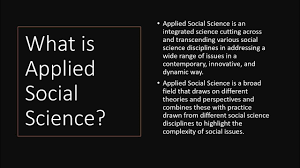
Social science is the study of people: as individuals, communities and societies; their behaviours and interactions with each other and with their built, technological and natural environments. Social science seeks to understand the evolving human systems across our increasingly complex world and how our planet can be more sustainably managed. It’s vital to our shared future.
Social science is one of the branches of science, devoted to the study of societies and the relationships among members within those societies. The term was formerly used to refer to the field of sociology, the original "science of society", established in the 18th century. In addition to sociology, it now encompasses a wide array of academic disciplines, including anthropology, archaeology, economics, geography, linguistics, management, communication studies, psychology, culturology and political science.
Positivist social scientists use methods resembling those used in the natural sciences as tools for understanding societies, and so define science in its stricter modern sense. Interpretivist or speculative social scientists, by contrast, may use social critique or symbolic interpretation rather than constructing empirically falsifiable theories, and thus treat science in its broader sense. In modern academic practice, researchers are often eclectic, using multiple methodologies (for instance, by combining both quantitative and qualitative research).The term social research has also acquired a degree of autonomy as practitioners from various disciplines share similar goals and methods.
-
Ouvert : mardi 3 décembre 2024, 22:15


